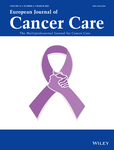Influential barriers perceived by South Asians in Hong Kong to undergoing cervical cancer screening
Funding information: Health and Medical Research Fund, Hong Kong Special Administrative Region, Grant/Award Number: 14151841
Abstract
Objective
To report the uptake rate of cervical cancer screening (the Papanicolaou [Pap] test) and identify the perceived barriers associated with screening uptake among South Asian women in Hong Kong.
Methods
This cross-sectional study involved a structured survey of 776 South Asian women aged 21 and above, recruited from the community. The participants' demographic characteristics, Pap test uptake and responses to a validated 14-item scale of perceived barriers to screening was collected. The data were analysed using descriptive statistics and logistic regression.
Results
The Pap test uptake rate was 40.3%. Multivariate analysis identified two perceived barriers significantly associated with the participants' Pap test uptake: (1) not knowing where to have the test and (2) the belief that they did not need a test if they felt well.
Conclusion
Although language problems and embarrassment are commonly reported barriers to screening by South Asians, the participants were more concerned about where to have the test and whether they needed it. Future interventions should thus focus on enhancing their access to the service and clarifying their understanding of the need.
CONFLICT OF INTEREST
The authors declare no conflict of interests.
Open Research
DATA AVAILABILITY STATEMENT
Research data are not shared.




